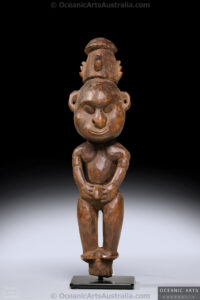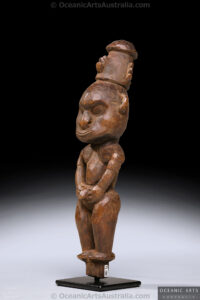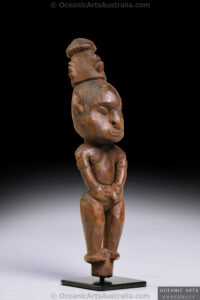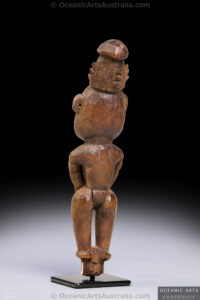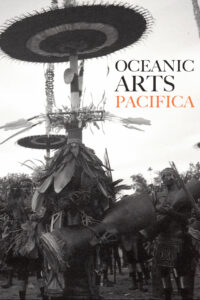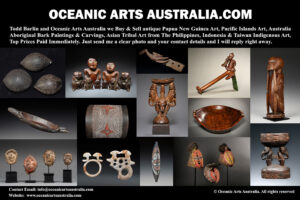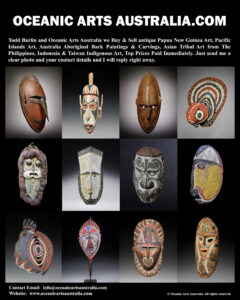A Fine Old New Guinea Flute Stopper Sepik River Area Papua New Guinea Collected 1934
| Collection No. | TB-2892 |
|---|---|
| Size | Height 25cm |
A Fine Old Flute Stopper from the Coastal Sepik River Area of Papua New Guinea was collected in 1934
This old and used Flute Stopper is from the Coastal Sepik River area of Papua New Guinea. In the form of a standing male ancestor figure who is wearing an elaborate headdress. This Flute Stopper dates from the early 20th Century as it was collected in the Sepik River area in the 1930s by Albert Gross. The Gross collection is in major collections in Europe and around the world.
For many New Guinea people, flutes are among the most sacred and important of all musical instruments. Sacred flutes were made from hollow cylinders of bamboo and played, like a Western flute, by blowing through a hole in the side of the instrument near the upper end. The tops of these flutes were almost always decorated with Flute Stoppers depicting important ancestors or totemic animals. Some of the finest artworks made in the Sepik River area were the sacred Flute Stoppers.
This fine example portrays an important male ancestor wearing an elaborate headdress wear the person’s hair is pulled through a rattan cone decorated with dog teeth.
These sacred flutes were used in pairs and were kept hidden in the Men’s Ceremonial House or haus tambaran. The sound of the flutes are the voices of specific honoured ancestors or spirits and the flutes have their personal names.
Flutes are also associated with crocodile spirits and flutes were used during initiation rites in which novices had cuts made on their backs and chest that healed into permanent scarification that resemble crocodile skin and marked them as initiated individuals.
Provenance: Collected by Albert Gross in 1934 and then by descent through his family. The Todd Balin Collection of New Guinea Oceanic Art
See my new EXHIBITIONS GALLERY showing the Museums and Art Galleries Exhibitions that I provided artworks for over the past 40 years. There is the link to the article about my artworks published in the prestigious Louvre Magazine in 1996
I have artwork for Museums and art Galleries but also for collectors at every stage of their collecting. I want to encourage people to explore the fine art of New Guinea & West Papua and the Pacific Islands and to be able to see and touch the artworks in a relaxed and friendly manner in my Sydney Gallery. I would like to invite you to visit my gallery and see the artworks in person and also look at my website www.oceanicartsaustralia.com where there are many Galleries & Sub Galleries to explore.
My Gallery of nearly 40 years is the last physical gallery in Sydney that specializes in New Guinea and Oceanic Art. Sydney is very close to New Guinea & the Pacific Islands where all of these amazing artworks came from, Australia’s closest neighbors.
To see many more rare items and the finest masterpieces, please make an appointment with us to visit the gallery.
For all inquiries, please contact us

